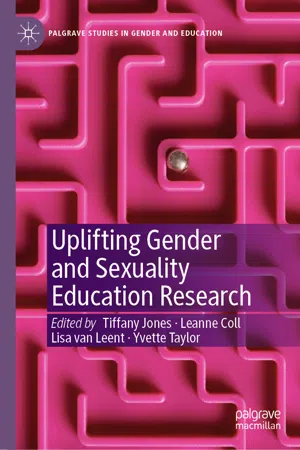Introduction
Gender and sexuality (G&S) identity can be constructed variably around the globe, particularly in relation to marginal gender and sexual identities including Lesbian, Gay, Bisexual, Transgender and Intersex (LGBTI) identities. Whilst sometimes these stem from dominant Western globalising discourses, some identities are only known and used in ways which are ‘meaningful’ in the cultures from which they derived. This can make them harder to study and sometimes researchers avoid the task altogether. There is a need for researchers to provide objective internationalist LGBTI education issues knowledge to pre-service teachers; studies show teachers want this information [1]. This section collates literature and data towards supporting researchers to: globalise LGBTI conceptualisations, use reliable research and avoid unreliable sources.
Globalising LGBTI Conceptualisations
Researchers addressing LGBTI identities may first define them. When doing so they should combat the sense that concepts associated with LGBTI issues solely occur within ‘Western’ identity constructions, recalling diverse geographical histories of local LGBTI identity conceptualisations or social practices and emphasising their relevance to teachers of history, geography and social studies.
Sexual orientation variance including same-sex and multi-sex attraction or encounters are not limited to gay, lesbian, bisexual, fluid and queer ‘labels’—these are established in multiple nations’ pasts. Around 2500 years ago Vatsyayana’s Kama Sutra included an entire chapter on homosexuality; male same-sex relationships appeared in Tamil literature in the third century BC and female same-sex relationships were seen in 1700s Urdu poetry [2]. Same-sex sexual acts were documented as a normal facet of life prior to 1800s Western influence within the context of general male sexual craving in the Middle East [3]; and romantic relationships in Asia [4]. Whilst in early modern history British colonisation spread anti-sodomy laws throughout many countries and Western psychiatry pathologised what it labelled ‘homosexual’ attraction, evidence from researchers like Kinsey and members of the American Psychological Association (APA) informed the dominant contemporary view in the West that homosexuality is a common and healthy occurrence in both humans and animals [5]. Modern school psychology has moved from ‘fixing’ students to fit heterosexual norms; towards affirming approaches creating supportive school environments for LGBTIs [6]. Amongst secondary students globally, it is generally estimated that about 10% identify as gay or lesbian and bisexuality may count for over one-third of adolescents’ sexual experiences [7]. Most recognised their same-sex attraction around puberty (11–16 years), over a third knew earlier [8, 9].
Gender identity variance (how a person identifies as being a masculine, feminine, neither, or both, or a combination, which may or may not correspond to the sex assigned to them at birth) and gender expression variance (how a person expresses their gender through manners, dress, social roles and other means) has been documented for thousands ...
